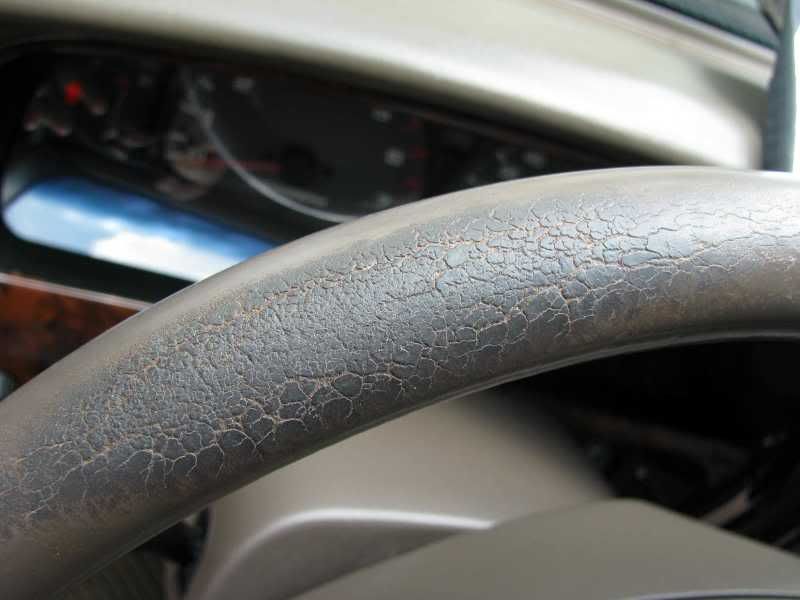Hello Everyone,
I have a 1999 Toyota 4Runner that has a tan leather steering wheel with heavy wear at the 12 o'clock position. It is past the point of conditioning and cleaning, however I am now trying to find the next best option.
I have searched the forums and found AGLA (alan gun leather accessories) listed a few places as a recommendation but then many many other bad reviews about them. Have seen the place in texas some recommend that recovers wheels but this truck is a DD so shipping the wheel off for a week won't work. I looked at Wheelskins covers, but it doesn't cover the spoke part of the wheel, and the color samples I had them send me aren't even close...and I can't find anyone that used a blk cover (only other contrasting color I can think of) on a tan wheel to see how bad that looks. Have tried 2 different highly recommended upholstry shops in my area and 1 won't touch steering wheels, the other only installs wheelskins. Have looked on ebay etc and can't find any tan replacements, and Toyota wants $900 w/o airbag!!!
So I am trying to find out if any of the restoration kits (like the leatherique kit, etc) work decently, or if I should just get the wheelskins that doesn't match and say oh well

I have a 1999 Toyota 4Runner that has a tan leather steering wheel with heavy wear at the 12 o'clock position. It is past the point of conditioning and cleaning, however I am now trying to find the next best option.
I have searched the forums and found AGLA (alan gun leather accessories) listed a few places as a recommendation but then many many other bad reviews about them. Have seen the place in texas some recommend that recovers wheels but this truck is a DD so shipping the wheel off for a week won't work. I looked at Wheelskins covers, but it doesn't cover the spoke part of the wheel, and the color samples I had them send me aren't even close...and I can't find anyone that used a blk cover (only other contrasting color I can think of) on a tan wheel to see how bad that looks. Have tried 2 different highly recommended upholstry shops in my area and 1 won't touch steering wheels, the other only installs wheelskins. Have looked on ebay etc and can't find any tan replacements, and Toyota wants $900 w/o airbag!!!
So I am trying to find out if any of the restoration kits (like the leatherique kit, etc) work decently, or if I should just get the wheelskins that doesn't match and say oh well

